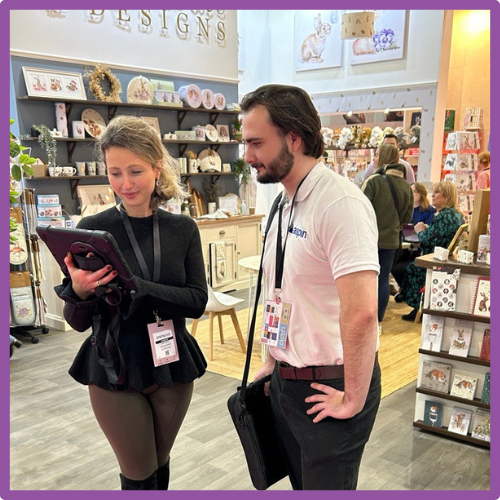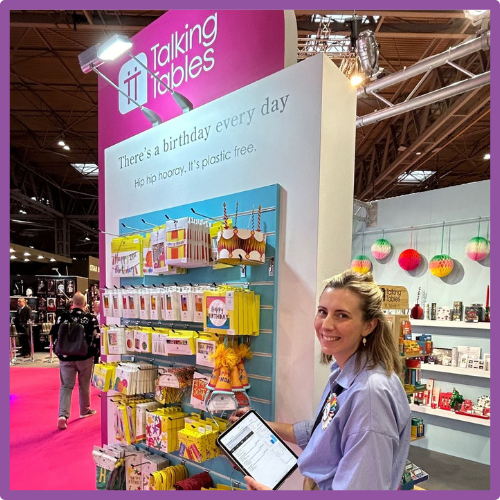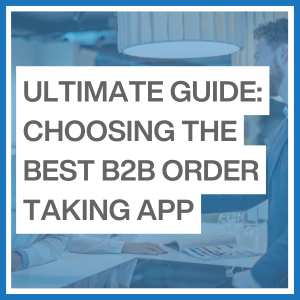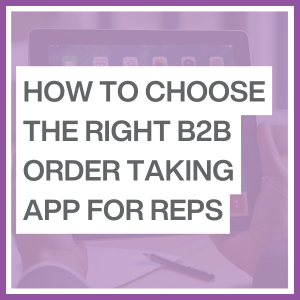Ten tips for exhibiting at tradeshows
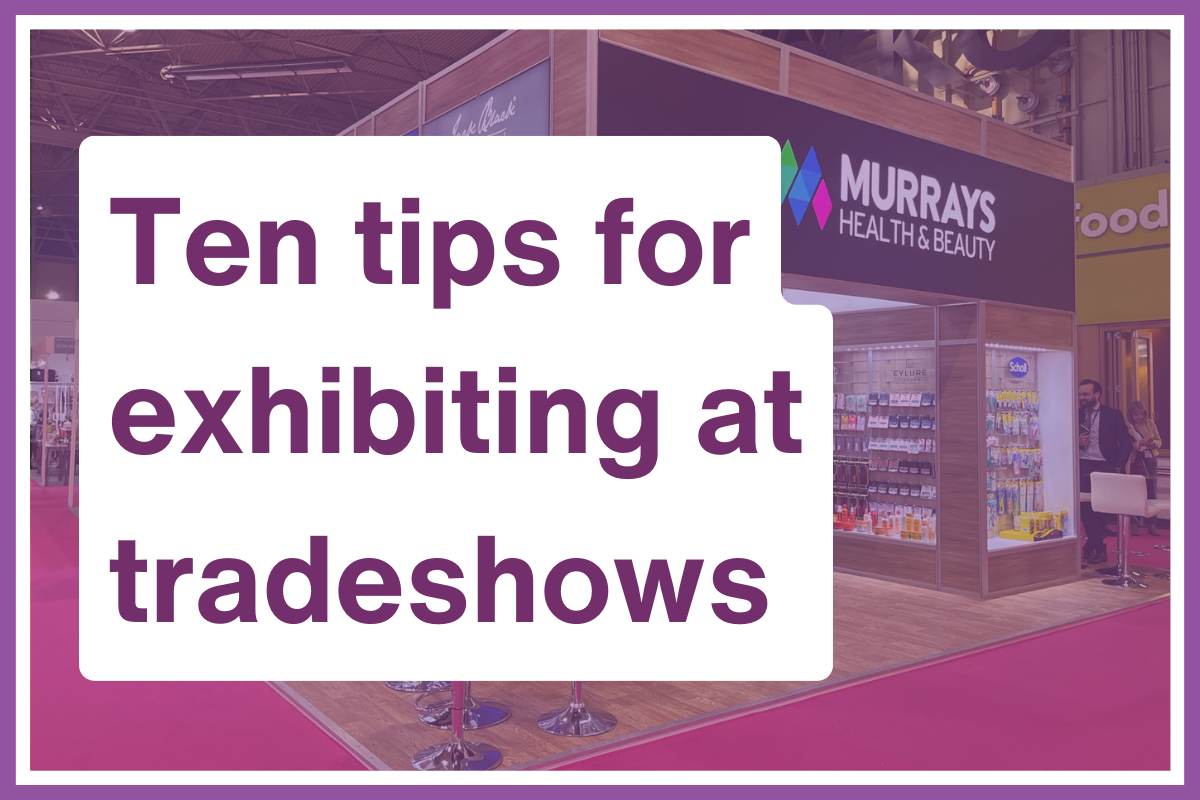
Read our ten tips for exhibiting at tradeshows to ensure a healthy return on investment (ROI).
Exhibiting at a trade show is a big investment of time, money, and resources. It’s also a golden opportunity to position your business, showcase your products, and build valuable connections. For B2B product distributors, tradeshows can be a platform to attract retailers, engage with partners, and stay updated on market trends.
But, how do you ensure your trade show presence delivers a solid ROI?
In this post, we’ll explore our 10 tips for exhibiting at tradeshows, covering everything from planning to post-event follow-ups.
1. Set Clear Objectives
Why are you attending the trade show? If your answer is “because everyone else does,” it’s time to rethink your approach. Whether it’s capturing leads, strengthening relationships with existing customers, or launching a new product, your objectives should guide every decision you make.
When goals are defined upfront, it’s easier to focus your efforts and measure success. For example, if your goal is to generate leads, plan activities that drive engagement, like interactive demos or exclusive promotions. If brand awareness is your priority, ensure your booth is visually striking and consistent with your branding.
Key takeaways:
- Define your primary objective, such as lead generation, sales, or product awareness
- Break goals into measurable targets, like collecting 200 qualified leads or booking 10 meetings
- Communicate these goals clearly to your team before the event
2. Choose the Right Trade Show
Not every trade show will deliver value to your business. With hundreds of events taking place across the globe, it’s essential to choose the ones that align with your niche and audience. Look for shows that are relevant to your industry and are attended by your target customers, such as retailers or wholesalers.
Research the show’s reputation by reviewing exhibitor testimonials or speaking to past attendees. A smaller, more focused event could be far more impactful than a larger, more general trade show.
Key takeaways:
- Research trade shows where your ideal customers are likely to attend
- Consider the timing, location, and expected audience profile
- Check exhibitor lists and attendee demographics from previous years
3. Design an Engaging Booth
Your booth is your shopfront at the trade show, and first impressions matter. A cluttered or uninspiring booth won’t draw visitors, no matter how innovative your products are. Invest in a professional, inviting setup that reflects your brand identity.
The best booths balance aesthetics with functionality. Clear signage, well-organised displays, and interactive features (like touchscreens or product demos) can make your booth more engaging. Remember, an open, welcoming design encourages visitors to step in and explore, while cramped spaces can deter them.
Key takeaways:
- Use eye-catching visuals that align with your brand
- Keep the booth layout open, accessible, and welcoming
- Incorporate technology, such as digital displays, to add interactivity
4. Train Your Team
Your team is your greatest asset at a trade show. Attendees will remember your people and the conversations they had with them far more than your brochures or banners. That’s why training your staff is critical.
Make sure your team understands your products, key selling points, and company messaging. Teach them how to qualify leads, answer common questions, and handle objections. Body language, approachability, and active listening are equally important. A well-trained team can turn casual visitors into high-value leads.
Key takeaways:
- Train staff to deliver consistent, on-brand messaging
- Practise elevator pitches for succinct conversations
- Focus on building rapport and understanding customer needs
5. Promote Your Presence
Don’t wait for attendees to stumble across your booth – actively promote your presence before the show. A targeted pre-show marketing campaign can drive more traffic to your booth and ensure you connect with the right audience.
Send personalised invitations to your existing clients and prospects, highlighting what they’ll gain from visiting your booth. Use social media to announce giveaways or exclusive product launches. Some trade shows even offer exhibitor platforms where you can engage with attendees before the event starts.
Key takeaways:
- Use email campaigns to invite key contacts to your booth
- Promote your attendance on social media using event-specific hashtags
- Highlight what makes your booth worth visiting, such as new products or demonstrations
6. Engage Attendees
Standing behind a counter and waiting for people to approach you isn’t enough. Your booth staff need to be proactive and engaging. Offer a reason for visitors to stop by, whether that’s an enticing product demo, a free sample, or an interactive activity.
Once they’re at your booth, focus on creating a memorable experience. Instead of overwhelming visitors with too much information, start a conversation by asking open-ended questions about their business challenges.
Key takeaways:
- Use giveaways, competitions, or live demos to attract attention
- Encourage staff to actively engage with passers-by
- Focus on understanding the visitor’s needs rather than hard-selling
7. Qualify Leads Effectively
Not every visitor will be a potential customer, and that’s okay. The key is to identify those who are worth following up with after the event.
Develop a set of questions your team can use to qualify leads quickly. For example, ask about their purchasing timelines, budgets, or specific challenges. Use lead capture software (such as the ‘forms’ functionality within PixSell sales app) to record details on the spot, categorising each lead by priority.
Key takeaways:
- Use questions to determine if a lead fits your ideal customer profile
- Categorise leads as high, medium, or low priority for follow-up
- Capture contact details and key information using a digital tool
8. Network Beyond Your Booth
While your booth is your home base, the value of a trade show extends far beyond its four walls. Attend workshops, panels, or networking sessions to build connections with other exhibitors, suppliers, or industry influencers.
These informal conversations can lead to new business partnerships or insights into emerging trends. Bring plenty of business cards and be prepared to explain your business in a concise and compelling way.
Key takeaways:
- Attend seminars and networking events to broaden your connections
- Visit other booths to understand industry trends
- Prepare a concise introduction about your business for networking
9. Follow Up Promptly
Your trade show efforts won’t pay off if you fail to follow up. Attendees are bombarded with information at these events, so it’s vital to reach out quickly while your business is still fresh in their minds.
Personalised follow-ups are far more effective than generic emails. Reference something specific from your conversation to show you were paying attention. Offer additional resources, like case studies or brochures, to reinforce your value.
Access to exhibition-specific software, such as PixSell’s Exhibition Mode, will allow you to ringfence your show activities for easy follow ups.
Key takeaways:
- Send personalised thank-you emails within a few days of the event
- Share resources that address the attendee’s specific interests or challenges
- Schedule follow-up meetings or calls to keep the conversation going
10. Evaluate and Learn
The trade show isn’t truly over until you’ve reviewed its performance. Take the time to evaluate what went well and what could be improved for future events.
Look at metrics such as the number of leads generated, deals closed, or ROI on your booth investment. Gather feedback from your team about their experiences and document lessons learned. This will help you refine your strategy for future trade shows.
Key takeaways:
- Assess results against your original objectives
- Collect feedback from your team to identify areas of improvement
- Document best practices and lessons learned for next time
Conclusion
Exhibiting at a trade show is an investment. But, with the right strategy, it can deliver huge returns for your business. By implementing these our ten tips for exhibiting at tradeshows, you’ll be well-equipped to maximise impact, connect with the right audience, and achieve your goals.
When it comes to streamlining your trade show experience, PixSell can be a game-changer. A power sales app for reps and agents, PixSell will give your team instant access to up-to-date product catalogues, detailed customer data, and seamless order-taking functionality – all from their iPads. Whether you’re showcasing products, taking live orders, or following up with leads, PixSell helps you operate with professionalism and efficiency, leaving a lasting impression on attendees. It’s the ultimate tool to help you sell more, save time, and stand out from the crowd.
If you’d like to know how PixSell can enhance your tradeshows, call our team on 01794 500 200 and ask for a demonstration. Or click on the big green button above.
Related Articles


